Ravens and crows—collectively known as members of the genus Corvus—are famous for their striking black plumage, sharp intelligence, and remarkable adaptability. Considered some of the smartest birds on Earth, certain species rival primates in problem-solving skills, tool use, and social behavior.
Although they share many traits such as omnivorous diets, carrion feeding, and glossy black feathers, different Corvus species vary widely in size, distribution, behavior, and appearance. This expanded guide introduces 10 prominent raven and crow species, offering detailed insights into their characteristics, habitats, and ecological roles.
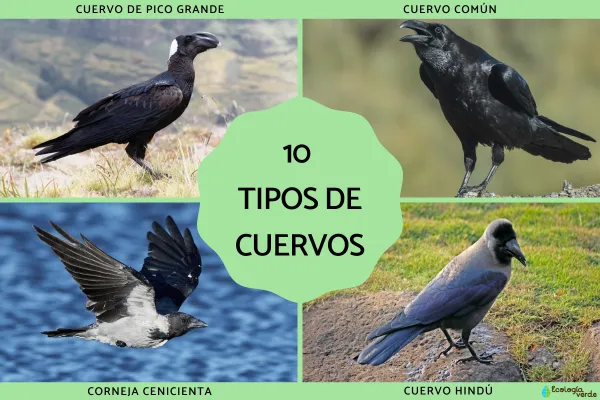
The Thick-billed Raven stands out immediately thanks to its exceptionally large, heavy bill—one of the most massive bills found among passerine birds. Often compared to a toucan’s bill in size (but entirely black with a pale tip), it gives this species a powerful and imposing profile.
One of the largest Corvus species, reaching about 65 cm in length
Body weight ranges from 1–1.5 kg, making it the heaviest corvid
Distinctive white patch on the nape of the neck
Restricted to the Horn of Africa, primarily Ethiopia, Somalia, and Eritrea
This species is highly intelligent and well adapted to the rugged highland landscapes of East Africa.
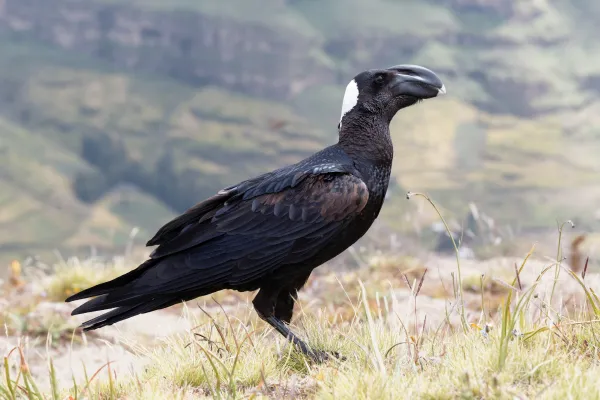
The Common Raven is the most widely distributed raven in the world, found across the entire Northern Hemisphere. Alongside the Thick-billed Raven, it is one of the largest species in the genus.
Average length around 63 cm
Occupies forests, mountains, coastal cliffs, and human settlements
Known for complex vocalizations and advanced problem-solving skills
Sensitive to environmental change—populations may migrate when stressed
The Common Raven is deeply embedded in folklore, mythology, and cultural symbolism around the world.
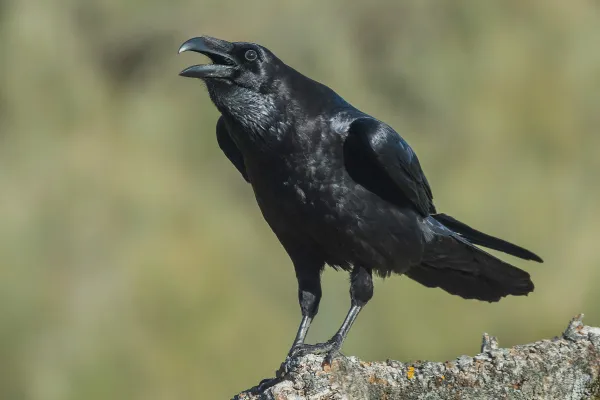
Often confused with the Common Raven, the Brown-necked Raven is slimmer overall, with a narrower bill and a lighter frame.
Measures about 50 cm, slightly smaller than the Common Raven
Black plumage with copper-colored iridescence on the head and neck
Wing and body feathers reflect blue-purple tones under sunlight
Inhabits deserts and arid landscapes in North Africa, the Middle East, and the Arabian Peninsula
Its ability to thrive in dry, open regions makes it an impressive example of avian adaptation.
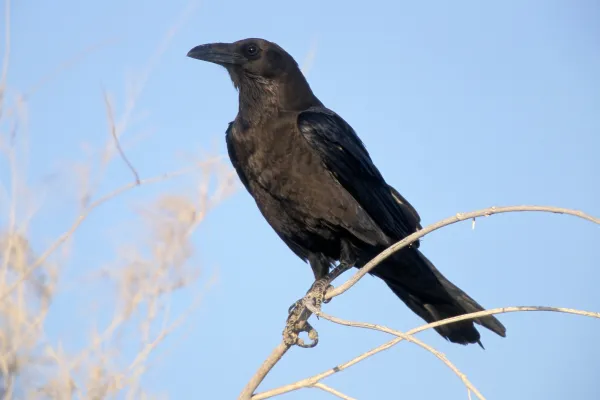
The Pied Crow is easily recognized by its bold contrast of colors: a bright white “vest” across the chest and belly, combined with a glossy black head, wings, and tail.
Widespread across sub-Saharan Africa
Avoids dense rainforests but thrives in savannas, farmlands, and open country
Opportunistic feeder—scavenges carcasses, steals eggs, and raids nests
Frequently found near markets, butcher shops, and roadside waste sites
Its adaptability and striking plumage make it one of Africa’s most iconic corvids.
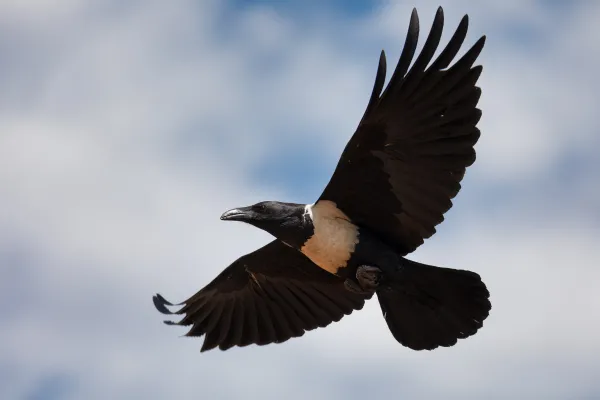
Known in English as the Carrion Crow, this species is common throughout Europe and parts of Asia.
Average length around 48 cm
Glossy black plumage with subtle greenish iridescence
Scavenges human waste and animal carcasses
Often forms loose associations with foxes to steal portions of their prey
Population estimated between 54–92 million mature individuals
Highly intelligent and opportunistic, the Carrion Crow has successfully adapted to urban life.

Endemic to the Caribbean, the Cuban Crow inhabits Cuba, the Turks and Caicos Islands, and the Isle of Youth.
Thrives in degraded or deforested environments
Tolerant of human-altered landscapes, yet still prefers scattered trees or canopy cover
Known for its distinctive vocal repertoire
Its ability to adapt to agricultural lands has helped it maintain stable populations.

Also called the “Hooded Crow,” this species has one of the most unique color combinations in the genus.
Body and neck are pale gray, forming a cloak-like pattern
Wings, head, and legs remain deep black
Average length about 45 cm
Found throughout Northern and Eastern Europe
Some populations migrate to Asia or the British Isles during winter
The Hooded Crow is closely related to the Carrion Crow, and the two can hybridize in overlapping regions.
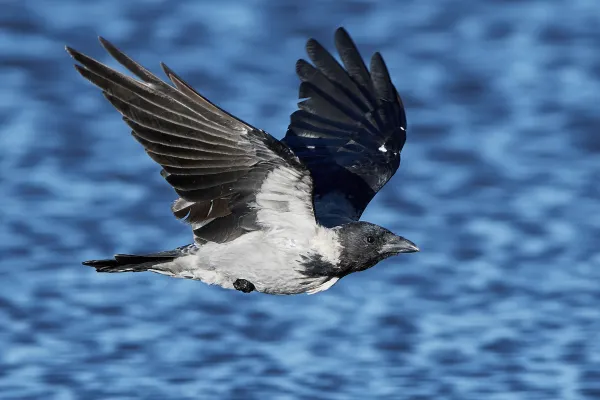
A familiar sight across North America, the American Crow ranges from Florida to Canada, with northern populations migrating during harsh winters.
Size ranges 40–54 cm, smaller than the Common Raven
Shorter bill but a more robust head shape
Tail is fan-shaped or slightly diamond-shaped
One of the most adaptable corvids, thriving in cities, farmlands, and forests
American Crows are known for their intelligence, strong family structures, and ability to recognize individual human faces.

Also known as the Indian or Domestic Crow, the House Crow is native to South and Southeast Asia but has been introduced to many parts of the world.
Slender body with gray torso and black head, wings, and legs
Extremely adaptable and often considered an invasive species
Closely associated with human settlements
Feeds from waste, markets, docks, and urban environments
Its ability to exploit human resources has allowed it to spread rapidly.
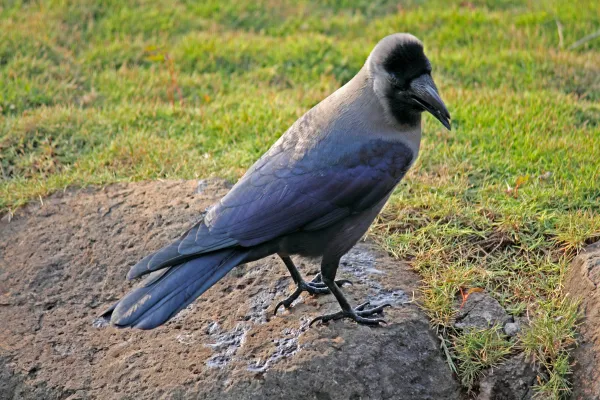
This species, known for its distinctive white chest “collar,” is found in parts of China, Vietnam, and Taiwan.
Black body interrupted by a bright white band around the chest
Prefers open agricultural fields and rice paddies
Less tolerant of high-density human settlements compared to other crows
Localized distribution makes it more vulnerable to habitat change
Its contrasting coloration makes the Collared Crow one of the most visually striking corvids.
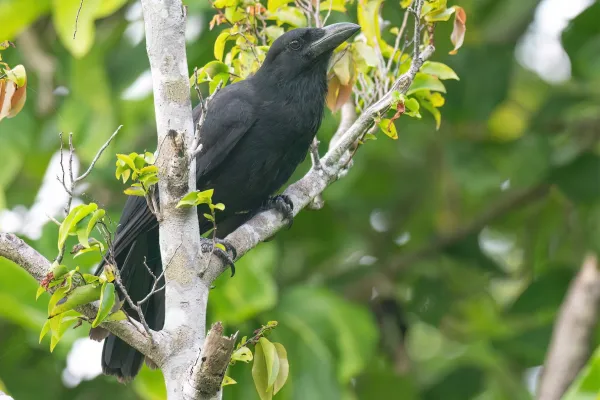
Beyond the ten featured above, many other raven and crow species exist around the world, including:
Palm Crow (Corvus palmarum)
Fish Crow (Corvus ossifragus)
Gray Crow (Corvus tristis)
Violet Crow (Corvus violaceus)
Torresian Crow (Corvus orru)
Bennett’s Crow (Corvus bennetti)
Flores Crow (Corvus florensis)
Somali Crow (Corvus edithae)
Jamaican Crow (Corvus jamaicensis)
Mariana Crow (Corvus kubaryi)
Each species showcases a unique variation in behavior, habitat choice, and evolutionary adaptation.
Ravens and crows form one of the most intriguing bird groups on the planet. With their incredible intelligence, symbolic presence in human culture, and remarkable ecological adaptability, Corvus species continue to captivate scientists, birdwatchers, and storytellers alike.
Understanding their differences helps us appreciate their diversity, from the massive Thick-billed Raven of East Africa to the sleek American Crow of North America.
Bibliography
SEO BirdLife (n.d.) Crow search. Available at: https://seo.org/guia-de-aves/?_nombre_del_ave=cuervo
EBird (n.d.) Corvus search. Available at: https://ebird.org/explore
Data Zone by BirdLife (n.d.) Crow search. Available at: https://datazone.birdlife.org/search?search=crow
We created this article in conjunction with AI technology, then made sure it was fact-checked and edited by a Animals Top editor.